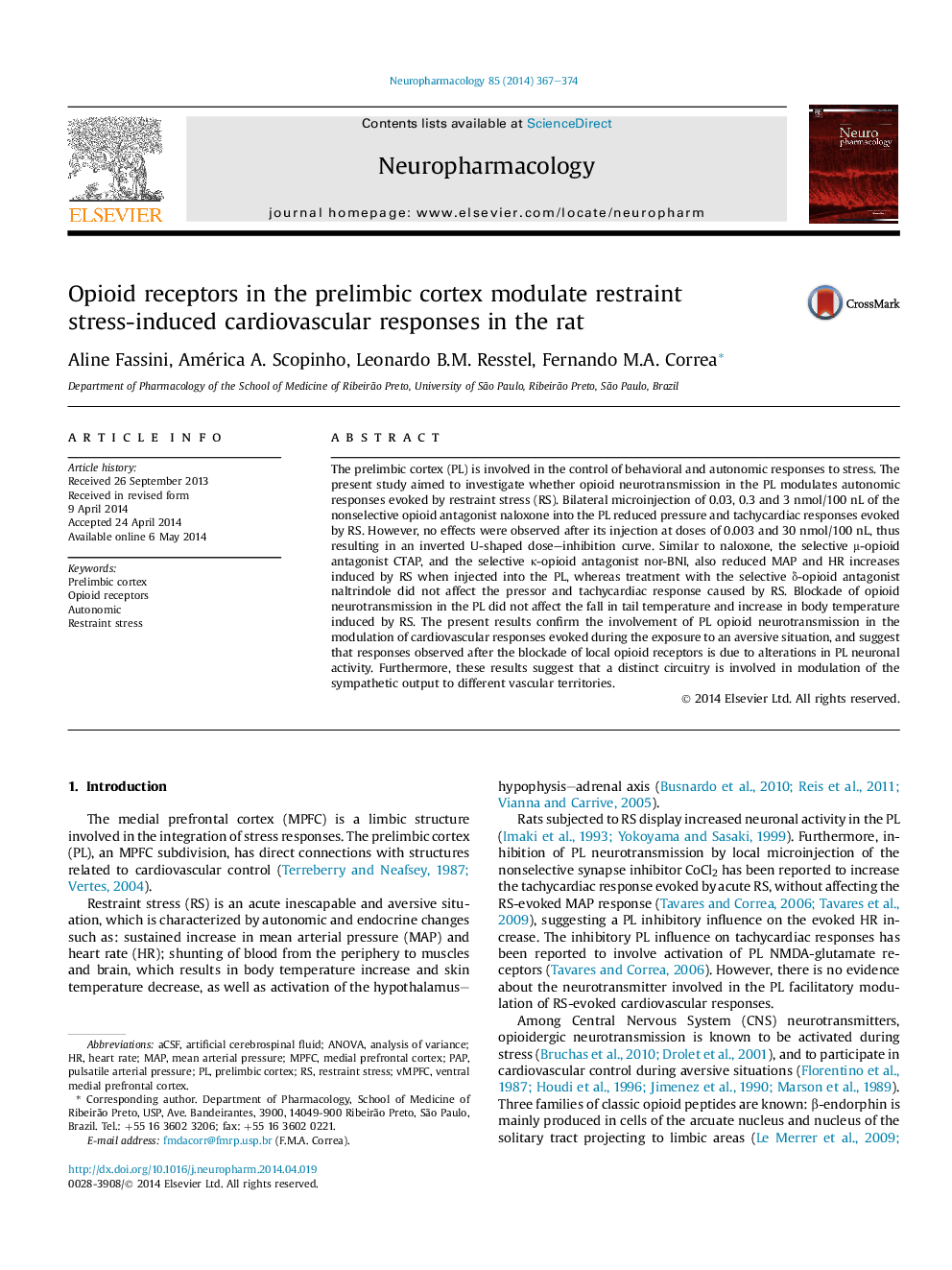| Article ID | Journal | Published Year | Pages | File Type |
|---|---|---|---|---|
| 5814445 | Neuropharmacology | 2014 | 8 Pages |
â¢Naloxone microinjection in the PL reduced the cardiovascular response elicited by RS.â¢Naloxone generated an inverted U-shaped dose-inhibition curve.â¢Blockade of μ and κ, but not δ receptors reduced RS-related cardiovascular changes.â¢It is suggested μ and κ receptors may act synergistically on tachycardiac response.â¢The treatments did not affect tail and body temperature changes induced by RS.
The prelimbic cortex (PL) is involved in the control of behavioral and autonomic responses to stress. The present study aimed to investigate whether opioid neurotransmission in the PL modulates autonomic responses evoked by restraint stress (RS). Bilateral microinjection of 0.03, 0.3 and 3 nmol/100 nL of the nonselective opioid antagonist naloxone into the PL reduced pressure and tachycardiac responses evoked by RS. However, no effects were observed after its injection at doses of 0.003 and 30 nmol/100 nL, thus resulting in an inverted U-shaped dose-inhibition curve. Similar to naloxone, the selective μ-opioid antagonist CTAP, and the selective κ-opioid antagonist nor-BNI, also reduced MAP and HR increases induced by RS when injected into the PL, whereas treatment with the selective δ-opioid antagonist naltrindole did not affect the pressor and tachycardiac response caused by RS. Blockade of opioid neurotransmission in the PL did not affect the fall in tail temperature and increase in body temperature induced by RS. The present results confirm the involvement of PL opioid neurotransmission in the modulation of cardiovascular responses evoked during the exposure to an aversive situation, and suggest that responses observed after the blockade of local opioid receptors is due to alterations in PL neuronal activity. Furthermore, these results suggest that a distinct circuitry is involved in modulation of the sympathetic output to different vascular territories.
